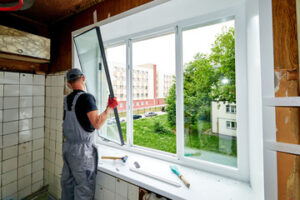The most common household pests in the continent seek food, water, and shelter inside homes. They can cause structural damage and spread diseases. Look for droppings, gnaw marks, scampering sounds, and shed skins around areas where they’ve been hiding.
Identifying common household pests can help you make an informed decision about the best Pest Control Mesquite TX method for your home.

Mice And Rats
Rodents are the most common household pest, and they pose significant health risks to humans and pets. They carry bacteria and diseases such as salmonella, rat-bite fever, and Hantavirus. They also cause damage to food and furniture and chew through wires, causing electrical problems and fire hazards. Mice and rats are very sneaky and can scurry through walls and attics without being detected, but they can leave telltale signs such as droppings, urine trails, and chew marks.
Mouse droppings are shaped like black grains of rice and are moist when fresh, but they become dry and gray over time. Look for them in pantries, kitchen cabinets, and other places where mice gather. Mouse urine has a very musky scent and may be found in pet water bowls or near kitchen cabinets. Mice have small bodies with triangular snouts and small heads, and their fur is usually brown, grey, or white. They can gnaw through almost anything, including wood, walls, and even electrical wiring. Gnaw marks on food containers, boxes, and furniture are common, and you may also notice gnawed holes in the back of cupboards.
Rats are larger than mice, with coarse red, brown, black, or grey fur and a long tail. They are more tolerant of cold weather and can live indoors or outdoors. They are typically nocturnal and often heard scratching or scurrying around at night. Look for them in crawl spaces, basements, attics, and sheds. Rat urine has a less strong odor than mouse urine and is darker in color.
Both rodents can make their way into homes through holes in the walls, but determining whether you have a rat or a mouse problem is important because different baits are used to eliminate them. Rats require large holes to move through, while mice can fit through a quarter-inch hole. In addition, rat droppings are shiny black with blunt ends and are larger than mouse droppings. Look for teeth marks on wood or other surfaces — larger and longer, “scratchier” marks indicate a rat and smaller, more rounded markings are typical of mice.
Bedbugs
Bedbugs are small reddish-brown blood-sucking wingless insects about the size of an apple seed. They are primarily active at night and seek hosts in bed where they can easily access their blood supply. They are known to bite people while they sleep and feed for 3-10 minutes, leaving behind itchy bites. Some people are more sensitive to the bites and may have a severe allergic reaction, which can be life-threatening.
Although they prefer to be near the host, these insects can travel from room to room by hitching rides on clothing and belongings. The bugs are also able to crawl through electrical outlets and down hallways. Early detection is important since a minor infestation can quickly spread to other areas of the home and can be extremely difficult to eradicate once established.
If you suspect a bed bug problem, look for rusty or reddish spots on the bedding and mattress. These marks are from crushed bed bugs and can bleed through the fabric on which they crawl. Other telltale signs are dark spots on mattresses and pillows, which is bed bug excrement that stains the fabric like a marker would. These dark spots are also known as smear marks.
Besides these visual indicators, watch for a musty odor in the area of the affected room. The bugs produce a foul smell from their waste products as they mature and shed their skins. In addition, they can leave a rusty or reddish color on surfaces where they crawl and bite.
While adults are primarily nocturnal, they can be found in living areas during the day if hungry and will come out to look for a host. They are attracted to body heat and carbon dioxide. They also are capable of traveling long distances in search of a host.
Inspect secondhand furniture, linen, and clothing for signs of bedbugs before bringing them into your home. You should also use tightly woven, zippered covers for your mattress and box springs to keep the bugs from entering or escaping. Repair cracks and crevices, and glue down peeling wallpaper to prevent bedbugs from hiding in the seams or tufts of your bed.
Spiders
Despite best efforts, even the cleanest homes can still be infested by unwanted pests. These uninvited guests can cause damage to our property and contaminate our food, making early detection essential for effective pest control.
Whether it’s ants in the kitchen, cockroaches in the bathroom, or fleas on the couch, these common household pests can be extremely frustrating to deal with. Thankfully, they’re not hard to spot with a little knowledge of their habits and appearance.
Arachnids (Spiders, Ticks And Mites)
Spiders are general predators that feed on a wide variety of prey, including other insects, flies, beetles, and other spiders. They use silk to climb and tether themselves for safety in case of falls, to ensnare their prey, to make nests, and more. Look for webs in corners and other secluded areas, as well as egg sacs and discarded silk.
Ants
The smallest of all house pests, ants are a nuisance because they contaminate food, destroy fabric and paper, and can stain surfaces. They also transmit bacteria and diseases, including salmonella, coliforms, Staphylococcus, and streptococcus, according to the National Pest Management Association (NPMA). Look for mud tubes, gnaw marks on wood or wires, chewed food packaging, and discarded nests.
Millipedes
These brown nocturnal bugs often wind up indoors during a weather change, seeking shelter from cold temperatures and precipitation. They’re scavengers that typically eat decaying vegetation and other organic material but can become a problem in the home, where they hide under objects, crawl along walls, and eat wallpaper and carpet. Look for long, creepy-crawly bodies with one set of legs per body segment and a distinct odor.
Centipedes
These long, scary-looking pests are generally harmless but can bite if threatened. They scavenge for food in damp areas like basements and bathrooms, where they’re most often found. They have three longitudinal dark stripes on their heads, 15 pairs of legs arranged along each side of the body, and move rapidly.
Spiders may not have webs but all species produce silk, a strong, flexible fiber that is useful for climbing and tethering themselves, wrapping up prey, creating egg sacs, nesting, etc. You can also recognize a spider by the two body parts it has, called a cephalothorax and abdomen.
Fleas
Fleas are wingless, dark reddish-brown, flat insects that feed on blood and can be found on most mammals (cats, dogs, squirrels, rabbits, rats, raccoons, opossums), birds, and some wild animals. There are over 2,000 different species of flea worldwide, but the cat flea is the most common in homes.
Adult fleas have compressed bodies that help them to move easily through hair, fur, and feathers on host animals. They also have piercing, sucking mouthparts and a row of backward-projecting spines known as a genal comb that helps them anchor themselves into host animals’ fur.
Female fleas lay 15 to 20 eggs each day and can produce up to 600 in a lifetime on an animal. Eggs are loosely deposited on the animal’s skin, fur, or feathers, where they are often found around places the animal sleeps or frequents (rugs, carpets, upholstered furniture, cat and dog beds, kennels, sand boxes, and lawns). Eggs hatch in about two to 14 days, and larvae feed on host animals until they grow too large for their host, at which time they spin a silk cocoon and enter the pupal stage.
Larvae and pupae live in warm, protected areas such as pet bedding, rugs, carpets, and cracks in the floor and walls. Once they have completed their development, new adults emerge from the cocoons when they sense a host animal or vibrations on the ground. Adult fleas will jump to the animal and bite it, ingesting up to 15 times their body weight in blood and causing serious allergies in some pets (flea allergy dermatitis).
In addition to causing itchy and irritating flea bites, consuming so much blood can make an animal deficient in nutrients, resulting in anemia. Signs of anemia in pets include pale gums and a lack of energy.
Fleas can be brought into the home on the pets of infested neighbors, as well as visiting wildlife such as rabbits and raccoons, and they often live in grass and shrubbery surrounding houses. They may also live in sandboxes, woodpiles, and used furniture. In the spring, they seek shelter in warm, indoor spaces such as rugs, pet beds, and window nooks.





